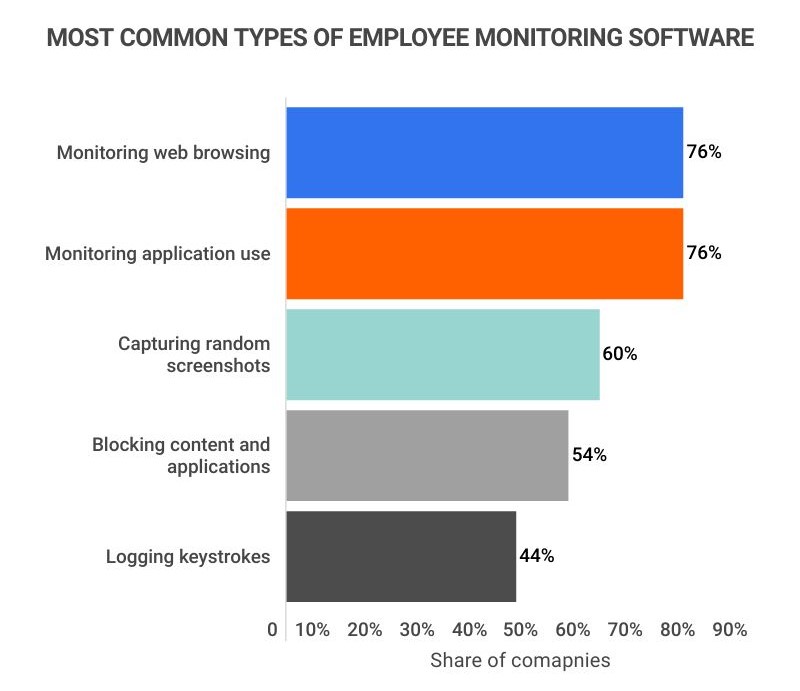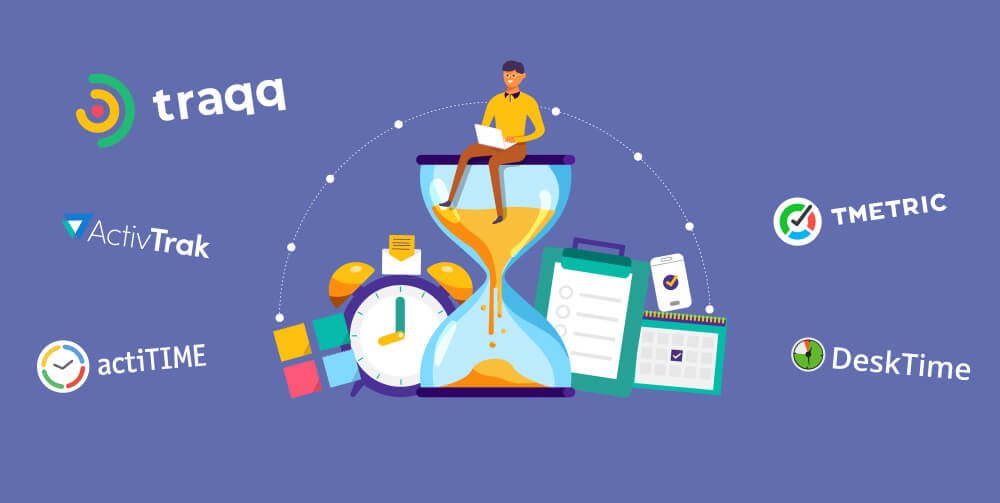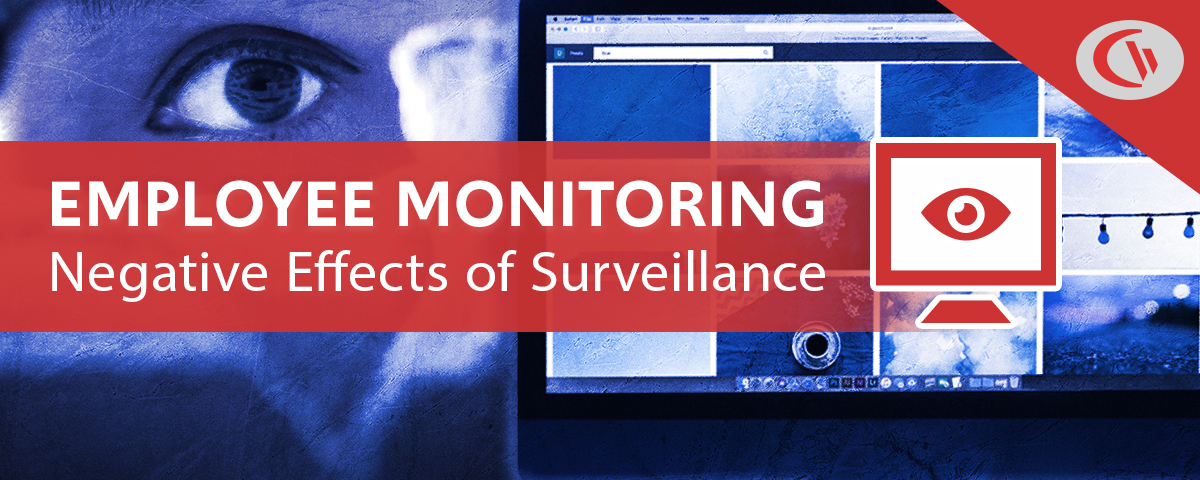Employee monitoring software refers to an application used by companies to monitor and monitor the activities of their employees as they are working. Employers are able to collect information about employee behavior such as keyboard strokes, internet use as well as screenshots of applications, and more. Software to monitor employee activity is mostly used to increase productivity, ensure compliance with corporate policies, protect sensitive information and address security concerns. When you are choosing an employee monitoring program it is important to consider a variety of factors. Be aware of these important aspects: Features- Decide the features you need based on the requirements of your business. Features include monitoring email activities blocking websites and keystroke recordings, tracking application usage, and email monitoring. Make sure you prioritize features according to your monitoring goals.
Compliance and Privacy: Ensure the software adheres to all ethical and legal guidelines regarding employee monitoring. Learn about the applicable laws and regulations in your area, for example data protection and privacy laws. Search for software with transparency and adjustable privacy settings that are in line with employee rights.
User-Friendliness: Consider the software's ease of use and accessibility. Easy setup and a user-friendly interface can simplify the process and help you save time. Look into customizable dashboards that include simple reporting tools that will help you quickly navigate and analyze the data.
Integrity and Compatibility: Check the compatibility of the software with your infrastructure. This includes operating systems, email applications as well as project management platforms as well as collaboration tools. Software that is compatible guarantees continuous monitoring, and doesn't interfere with your day-to-day business.
Data Security- Examine the security measures of your software to ensure the security of the data you collect. Access controls as well as encryption and secure storage of data, and conformity to industry-standard security protocols are vital. Verify that the vendor of software has a good security record and robust data protection practices.
Scalability: Take into consideration the way in which the software can be scaled to meet the needs of your growing organization. Select software that is able to scale up to meet the needs of your company in the event of adding more employees or new locations.
Reporting and Analytics - Look at the capabilities of the software for reporting. Find features that offer extensive insights into the productivity of employees, their the allocation of time, and other trends. Analytics and reports that can be customized to assist you in making better decisions and identify potential areas of improvement.
Customer Support - Evaluate the quality and accessibility of customer support offered by software companies. Examine their availability and technical support. If you have a good customer service staff, they will be able to provide quick assistance when problems occur.
Cost- Pay attention to the pricing model of the program. It could be a once-off payment that is subscription-based, or usage-based. Learn about the pricing model that includes any additional charges for support updates and additional features. Make a budget for your purchase according to the features and value provided.
Transparency and Communication With Employees Communication with employees should be clear and openness when working with employees in relation to the monitoring software. Be clear about the goal, scope, expectations, and the limitations of monitoring. Discuss any concerns that they might have, as well as assure them of respect for their privacy.
It is possible to make a more informed choice by considering these factors and choosing the employee monitoring program that meets your needs, while respecting the privacy of employees and meeting legal regulations. Take a look at the recommended time tracking monitoring service company for website advice.

What Features Are Included In The Employee Monitoring Software And How Do They Differ?
Software designed to monitor employee activity has numerous features that can be utilized to monitor and analyze employee behaviour. Different software options may provide various features, but these are the most common. It provides a comprehensive overview of how employees spend their time working.
Keystroke log- Keystroke logs all keystrokes made by employees. It can be used for the identification of productivity bottlenecks, for identifying unauthorised activities, and gathering evidence in the event of an investigation.
Screenshots and Screen RecordingScreen Recording and Screenshots - Certain software can capture screenshots of computer screens of employees regularly or record the screens of employees in real time. This feature can help assess productivity, monitor compliance or troubleshoot problems.
Internet Usage Tracking This feature monitors employees' internet activities, like the websites they visit, their search queries downloads, etc. It lets you identify other internet activities that are not related to work, security risks or policies that are not being followed.
Application Usage Tracking - This feature tracks the software that employees use during their work during working hours. It allows you to see which applications are the most popular. It can also help determine excessive or inappropriate applications.
Email Monitoring - Monitoring email allows employers the ability to monitor employee emails including messages received and sent attachments, emails and other content. It helps to ensure compliance with corporate policies, prevent data leaks and also examine any suspicious behavior.
Document and file tracking This feature monitors the changes in the form of transfers, modifications, and additions to files. It secures sensitive information, monitors document collaboration and ensures compliance with security policy.
Remote Monitoring lets employers supervise employees working remotely or from different locations. Employers can track their work and monitor that they work efficiently regardless of where they are.
Productivity Analysis Software for monitoring employees often includes features for productivity analysis that provide information on the allocation of time and work patterns. These analyses allow for the analysis of areas that can be improved and assist in optimizing workflow.
Reporting, Analytics and Visualizations- The comprehensive analytics and reporting features produce precise reports and graphs based on the collected information. These reports offer valuable insight into the performance of employees, time management, and the allocation of resources.
Software solutions that offer compliance and policy management features can help ensure conformity with industry and company policies and regulations. Employers can establish and enforce policies pertaining to the use of computers Internet access, acceptable use of computers and data security.
Alerts/Notifications: Alerts/notifications notify employers or managers when certain events or activities occur. As an example they may alert you users to avoid excessive use of the Internet and attempts to access restricted websites, and suspicious behaviour.
It is important to keep in mind that the accessibility and performance of these features could differ among different employee monitoring software solutions. When selecting a software, take into consideration the features that are compatible with your monitoring goals and comply with the ethical and legal standards in your region. Have a look at the best employee monitoring company for site info.

What Is The Law Of Compliance And Privacy For Software To Monitor Employee Performance?
Compliance with privacy and compliance laws is a critical aspect of software for monitoring employees. While the exact legal requirements can vary depending on the jurisdiction however, there are some common ways employee monitoring software respects privacy and compliance laws. Consent and Notification- While many areas require employees to provide an informed consent and be informed prior to any monitoring activity. The programs that monitor employees often have features that help employers effectively communicate monitoring guidelines to employees. It may be necessary to send out written notices or get consent through consent forms. Also, an employee manual that outlines monitoring policies can also be implemented.
Transparent Monitoring Policies: Employee monitoring software helps promote transparency by making sure that employees are aware of the specific types of data being collected, the purpose of monitoring, and the extent of monitoring activities. Comprehensive and clear policies enable employees to know the limits and rights of privacy and monitoring.
Data Minimization: To guarantee the employee monitoring programs comply with privacy laws, they often adhere to the principle of minimization of data. This means that only relevant data is gathered and stored, and irrelevant or excessive information is kept out of the system. The software promotes conformity by restricting the data collected to only what is required for monitoring.
Anaonymization and Aggregation Some software for monitoring employees anonymizes data, or aggregates it to protect employee privacy. Anonymization removes any personally identifiable information (PII) and renders it impossible to connect data with an individual. The data aggregated comprises multiple employees' data in order to get insights at a group level, without identifying specific individuals.
Secure Data Storage and encryption - Software for monitoring employees places a top priority on the security of data that is collected. Secure data storage and encryption is used to safeguard data from access by unauthorized persons or disclosure by accident. This means that data is secured both in transit and while at rest.
Access Controls and Restricted Permissions To ensure compliance, employee monitoring software often offers granular access control and permissions. Employers can restrict access to the monitoring data to those who need it for legitimate reasons, such as HR employees or administrators.
Employee Rights- Respecting employee's rights is adhering to compliance and privacy legislation. Monitoring software for employees typically includes options that allow employees to view and rectify their own monitoring information and also make complaints. It allows employees to claim their rights and seek remedies in cases of privacy violations.
Conformity to Data Protection Regulations - Employee monitoring software is designed to conform with data protection regulations like the General Data Protection Regulation in the European Union (GDPR) or the California Consumer Privacy Act in the United States (CCPA). The way to achieve compliance is by taking suitable measures to protect personal data, while respecting the rights of data subjects, and ensuring the lawful use of data.
While employee monitoring can help organizations adhere to regulations and laws However, they should be sure to consult with lawyers and stay current with local laws and regulations. Adhering to compliance and privacy laws requires a holistic approach that goes far beyond the software itself, including clearly defined policies, training for employees and monitoring for compliance on a regular basis. View the top rated employee monitoring services for website examples.
